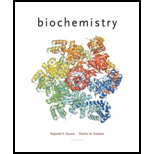
Concept explainers
Semiconservative or Conservative
(a) What will be the density of the DNA after one generation, assuming replication is semiconservative?
(b) Suppose replication took place by a conservative mechanism in which the parental strands remained together and the two progeny strands were paired. Design an experiment that could distinguish between semiconservative and conservative modes of replication.
(a)
Interpretation:
The density of DNA of E.coli cells should be calculated after one generation that are grown for many generations on14NH4+ and then transferred to a media containing15NH4+ as only source of nitrogen assuming the replication is semiconservative given the density of
Concept Introduction:
In model of semiconservative mode of replication parent DNA strands unwind and each one of these acts as a template for a new additional strand, thus synthesizes two DNA each with a pair of an old and a new strand.
Answer to Problem 1P
The average density after one generation of the transfer of media will be 1.717 g/ml.
Explanation of Solution
The density of DNA after one generation is calculated with arithmetic mean of densities of
Average density =
After the transfer of E.coli cells from a light medium of14NH4+ to a heavy medium of15NH4+, the cells have15NH4+ as only source of nitrogen. If a semi-conservative replication is assumed, replication produces two DNA each having an old strand of
(b)
Interpretation:
Assume a replication by a conservative mechanism in which parental strands stayed together and two daughter strands paired. A brief description of an experiment that can differentiate between semiconservative and conservative modes of replication should be given.
Concept Introduction:
For the DNA strands to differentiate there needs to be a system of tagging the parent DNA. This is done by changing the medium of the E.coli cells. Cells that are grown in15NH4+ medium are transferred to a medium containing heavy nitrogen (14N)
Answer to Problem 1P
Grow E.coli cells for many generations in a medium containing15NH4+ as a source of nitrogen. Extract DNA of the cells and calculate its density using “CsCSl” density gradient centrifugation. Feed E.coli for many generations on14NH4+ medium and Similarly determine its density.
Now, transfer the cells grown on15NH4+ medium to the media containing14N. The number of cells is carefully monitored by colony formation assay. The DNA is then extracted generation after generation. Extract the DNA after first generation and determine its density.
Explanation of Solution
The pair of progeny DNA produced has an equal density intermediate between the first group and the second group. This is not the case with conservative replication as density of progeny DNA is not equal.
In model of conservative replication, the pair of progeny DNA has one DNA containing two helical old strands and the other is newly fabricated. In contrast the semiconservative model has same density for both progeny DNA, intermediate between the14N and15N E.coli. The result fits with the latter model.
Want to see more full solutions like this?
Chapter 28 Solutions
Biochemistry
- The following data were recorded for the enzyme catalyzed conversion of S -> P. Question: Estimate the Vmax and Km. What would be the rate at 2.5 and 5.0 x 10-5 M [S] ?arrow_forwardPlease helparrow_forwardThe following data were recorded for the enzyme catalyzed conversion of S -> P Question: what would the rate be at 5.0 x 10-5 M [S] and the enzyme concentration was doubled? Also, the rate given in the table is from product accumulation after 10 minuets of reaction time. Verify these rates represent a true initial rate (less than 5% turnover). Please helparrow_forward
- The following data was obtained on isocitrate lyase from an algal species. Identify the reaction catalyzed by this enzyme, deduce the KM and Vmax , and determine the nature of the inhibition by oxaloacetate. Please helparrow_forwardIn the table below, there are sketches of four crystals made of positively-charged cations and negatively-charged anions. Rank these crystals in decreasing order of stability (or equivalently increasing order of energy). That is, select "1" below the most stable (lowest energy) crystal. Select "2" below the next most stable (next lowest energy) crystal, and so forth. A B 鹽 (Choose one) +2 C +2 +2 (Choose one) D 鹽雞 (Choose one) (Choose one)arrow_forward1. Draw the structures for the fats A. 16:2: w-3 and B. 18:3:49,12,15 2. Name each of the molecules below (image attached)arrow_forward
- draw the structures for the fats A. 16:2:w-3 B 18:3:9,12,15arrow_forward1. Below is a template strand of DNA. Show the mRNA and protein that would result. label the ends of the molecules ( refer to attached image)arrow_forwardAttach the followina labels to the diagram below: helicase, single stranded binding proteins, lagging strand, leading strand, DNA polymerase, primase, 5' ends (3), 3' ends (3) (image attached)arrow_forward
- 1. How much energy in terms of ATP can be obtained from tristearin (stearate is 18:0) Show steps pleasearrow_forwardMultiple choice urgent!!arrow_forward1. Write the transamination reaction for alanine. Indicate what happens next to each of the molecules in the reaction, and under what conditions it happens. 2.arrow_forward
 BiochemistryBiochemistryISBN:9781305577206Author:Reginald H. Garrett, Charles M. GrishamPublisher:Cengage Learning
BiochemistryBiochemistryISBN:9781305577206Author:Reginald H. Garrett, Charles M. GrishamPublisher:Cengage Learning Anatomy & PhysiologyBiologyISBN:9781938168130Author:Kelly A. Young, James A. Wise, Peter DeSaix, Dean H. Kruse, Brandon Poe, Eddie Johnson, Jody E. Johnson, Oksana Korol, J. Gordon Betts, Mark WomblePublisher:OpenStax College
Anatomy & PhysiologyBiologyISBN:9781938168130Author:Kelly A. Young, James A. Wise, Peter DeSaix, Dean H. Kruse, Brandon Poe, Eddie Johnson, Jody E. Johnson, Oksana Korol, J. Gordon Betts, Mark WomblePublisher:OpenStax College Human Heredity: Principles and Issues (MindTap Co...BiologyISBN:9781305251052Author:Michael CummingsPublisher:Cengage Learning
Human Heredity: Principles and Issues (MindTap Co...BiologyISBN:9781305251052Author:Michael CummingsPublisher:Cengage Learning Concepts of BiologyBiologyISBN:9781938168116Author:Samantha Fowler, Rebecca Roush, James WisePublisher:OpenStax College
Concepts of BiologyBiologyISBN:9781938168116Author:Samantha Fowler, Rebecca Roush, James WisePublisher:OpenStax College Biology: The Unity and Diversity of Life (MindTap...BiologyISBN:9781305073951Author:Cecie Starr, Ralph Taggart, Christine Evers, Lisa StarrPublisher:Cengage Learning
Biology: The Unity and Diversity of Life (MindTap...BiologyISBN:9781305073951Author:Cecie Starr, Ralph Taggart, Christine Evers, Lisa StarrPublisher:Cengage Learning Biology 2eBiologyISBN:9781947172517Author:Matthew Douglas, Jung Choi, Mary Ann ClarkPublisher:OpenStax
Biology 2eBiologyISBN:9781947172517Author:Matthew Douglas, Jung Choi, Mary Ann ClarkPublisher:OpenStax





